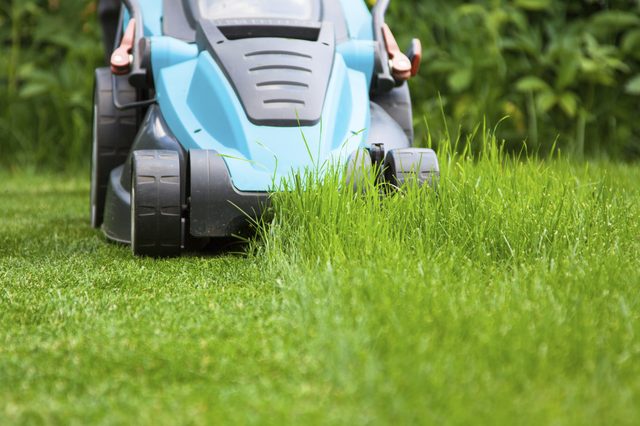Column | The Greenkeeper Writes
Published on October 18, 2018Of Mutant Superheroes and Mutant Turf

Bermuda Tifdwarf grass
Question? When are grasses not your average grasses?
Answer: When the grasses are mutants.
In the Spiderman movie, we get to see how Peter Parker gets his powers; a radioactive spider bit him. The spider itself was a mutant, a mixture of abilities from different species of spiders. The end result of the bite was to turn the DNA of Peter Parker to include the powers of the various species spiders.

If you think that was weird, you should try to remember another movie “The X-Men”, about a group of men and women with powers of mind reading, walking through walls, controlling the weather (no, she’s not a rain bomoh), magnetic energy, etc. Some of the powers are mind-boggling. I am not going to go into film review but the real purpose here is to introduce to you mutations in general and mutations in turfgrasses.
In the golf course industry, we take great pains in selecting the right grass for the greens. Early this century (damn, that makes me feel old) when I was reconstructing a (now) award-winning golf course, the question that I have been asking and I was asked is “What is the right grass?”. Almost every golf course and nursery will claim that their grass is the “right” grass. I went from one end of the Malaysian peninsula to the other (no kidding! I went to Palm Resort in JB and Darul Aman in Kedah) researching for the right grass. My quest brought more questions than answers, which ended when I decided to use grass from a source that I could verify its mother plant. I’d like to share what I’ve learnt on this quest.
In the beginning, there was the Common Bermuda, which mutated into a variety called Tifgreen, which somehow mutated into another variety called Tifdwarf. And that is what most ’new’ (those planted after the 1990s) golf courses are using.

Cutting the Common Bermudagrass
Mutation is a change in the hereditary material of an organism’s cells. The hereditary material consists of genes and chromosomes. Genes, which are composed of a substance called deoxyribonucleic acid (DNA), determine the hereditary traits of an organism.
The Origin Story (you know like in the comics)
In the 1920’s, it was reported that greens in the southern States of the US were using common Bermudagrass. It cannot be cut at low heights and is prone to diseases. They searched for a grass that can survive in the warm south of US, can be cut at low cutting heights, withstand disease and insect attacks, able to survive heavy traffic and the list goes on.
In 1952, in Tifton, Georgia, a variety of Bermuda grass, called Tifgreen aka Tifton 328 was identified with some of these qualities (as compared to the common Bermudagrass). All this was relative, if common Bermuda can be cut to a minimum of 10mm, Tifgreen can be cut at 8 or even 5mm for short durations. This variety was cultivated vegetatively – so that there was more of this variety for propagation hence its called a ‘cultivated variety’ or cultivar for short – and sent to a few golf clubs as an experimental turfgrass for greens.
A few years later, some of these golf clubs saw in their plot of this Tifgreen turf a few patches of dwarf turf. It was believed to be a natural dwarf mutant that occurred in Tifgreen while it was being tested at the Georgia Coastal Plain Experiment Station. Apparently, each of the golf courses obtained a few dwarf sprigs, along with the Tifgreen sent out in for the experiment. It was thoroughly evaluated in comparison with Tifgreen and Tifway that was in use at that time, they discovered it was better than what they have then and the result is Tifdwarf is used almost everywhere the weather doesn’t allow for Bentgrass.
Superhero or Supervillain?
Therefore yes, the grass you see on most Malaysian greens, Tifdwarf, is a mutant of Tifgreen, which is a mutant of Common Bermuda. So, ladies and gentlemen, you are playing on a mutant. Ha! I hope that makes you think twice before cursing the green next time you miss a putt. But it is a Spontaneous Mutation, not Induced. Since it is the kind of grass that we want, I would call it a mutant Superhero. If it starts mutating again, it’s probably going to be Supervillain.
It’s alive!
Before you start looking at the grass, thinking you are putting on some kind of monster mutating plant, some explanation on mutations is in order. After some research on the Internet, I found that there are two kinds of mutation: One is called Spontaneous Mutation, which means the mutation occurs naturally. It’s kind of rare but it happens now and then even among humans.
The natural rate of mutation is too slow and unreliable to produce the mutations in plants that breeders would like to see. In the late 1920s, researchers discovered that they could greatly increase the number of these variations or mutations by exposing plants to X-rays. “Mutation breeding” accelerated after World War II, when the techniques of the nuclear age became widely available. Plants were exposed to gamma rays, protons, neutrons, alpha particles, and beta particles to see if these would induce useful mutations. Chemicals, too, such as sodium azide and ethyl methanesulphonate, were used to cause mutations.
This kind of mutation is called Induced Mutation; the kind that happened to the spider that bit our Mr Parker and the kind that happened to our don’t-make-me-angry-you-wouldn’t-like-me-when-I’m-angry Dr Bruce Banner aka Incredible Hulk.
Look! Down on the grass! It’s a weed! It’s a dwarf! No! It’s an off-type…
These mutations or “off-typing” (Hey, I just started a new verb!) are progressive, it’s ongoing. Have you ever noticed on some greens in other golf courses sometimes you see blotches of different coloured or textured grasses? Especially on older greens. It just means the grass is genetically not stable and is mutating naturally. But not all of these grasses mutate at the same time. Just patches at a time. So after a few years, you get greens with patches or blotches of different coloured grass.

Multi-coloured greens?

Multi-mutant greens!
Sometimes these “off-types” are better than the original plant, so some enterprising superintendent adopted the grass and took to breeding them in nurseries and replanting them on greens. That’s why you hear of at least two local golf courses that plant these “off-types”. You’ve heard how fast the greens are and some are wondering why don’t all clubs do the same? Well, for one thing, you have to remember, when Spiderman marries Mary Jane, there is no guarantee there will be a Spiderboy or Spidergirl. Who knows what the next generation will be?
But I won’t condemn the two clubs, it could work too. Don’t forget that is how Tifdwarf started. They could grow for years with no problem with greens envied by other golf courses. But why take the risk? In the next couple of years, these greens could start mutating and you can see patches of different coloured grass on the greens. After all, you could be talking genetically unstable grass here.
Last question. In the turf industry are there any grasses that were produced by Induced Mutation? Are there any “nuclear” grass? Plenty. But I’ll give you just one. Bombarding Tifgreen with gamma rays produced the cultivar “Tifeagle”. It’s one of the latest varieties yet. Out in the market since 1998, it can be mowed at half the height of Tifdwarf with half the fertilizer requirement. And no, it doesn’t glow in the dark…
References:
http://grove.ufl.edu/~turf/bermvars/Bermudagrass varieties by Philip Busey and Albert E. Dudeck
http://www.ndsu.nodak.edu/instruct/mcclean/plsc431/mutation/mutation2.htmGenes and Mutations by Phillip McClean
http://grove.ufl.edu/~turf/dna/Distinguishing off-types in Tifway and Tifdwarf bermudagrass by Phil Busey1, Al Dudeck2, Charlie Guy2, and Nigel Harrison1 with consultation by David Huff